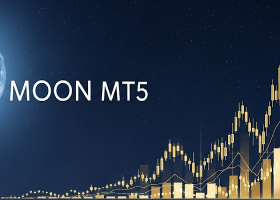
Using neural networks to improve trading systems based on technical analysis by means of the RSI financial indicator
Stock price predictions have been a field of study from several points of view including, among others, artificial intelligence and expert systems. For short term predictions, the technical indicator relative strength indicator (RSI) has been published in many papers and used worldwide. CAST is presented in this paper. CAST can be seen as a set of solutions for calculating the RSI using artificial intelligence techniques. The improvement is based on the use of feedforward neural networks to calculate the RSI in a more accurate way, which we call the iRSI. This new tool will be used in two scenarios. In the first, it will predict a market in our case, the Spanish IBEX 35 stock market. In the second, it will predict single company values pertaining to the IBEX 35. The results are very encouraging and reveal that the CAST can predict the given market as a whole along with individual stock pertaining to the IBEX 35 index.
1. Introduction
There has been growing interest in decision support trading systems in recent years. Forecasting price movements in stock markets has been a major challenge for common investors, businesses, brokers and speculators (Majhi, Panda, & Sahoo, 2009). The stock market is considered a highly complex and dynamic system with noisy, non stationary and chaotic data series (Wen, Yang,Song, & Jia, 2010), and hence, difficult to forecast (Oh & Kim, 2002;Wang, 2003). However, in spite of its volatibility, it is not entirely random (Chiu & Chen, 2009). Instead, it is non linear and dynamic (Abhyankar, Copeland, & Wong, 1997; Hiemstra & Jones, 1994) or highly complicated and volatile (Black & Mcmillan, 2004). Stock movement is affected by the mixture of two types of factors (Bao& Yang, 2008): determinant (e.g., gradual strength change between buying side and selling sides) and random (e.g., emergent affairs or daily operation variations). According to Wen et al. (2010), the study of the stock market is a hot topic, because if successful, the result will transfer to fruitful rewards. Thus, it is obvious that predicting the stock market’s movement is the long cherished desire of investors, speculators, and industries (Kim, 2004).
However, this market is extremely hard to model with any reasonable accuracy (Wang, 2003). Prediction of stock price variation is a very difficult task and price movement be haves more like a random walk and time varying (Chang & Liu,2008). However, in spite of this complexity, many factors, including macroeconomic variables and stock market technical indicators, have been proven to have a certain level of forecast capability in the stock market during a certain period of time (Lo, Mamaysky, & Wang, 2000). One of the tools for this financial practice is technical analysis, also known as ‘‘charting’’. According to Leigh, Modani, Purvis, and Roberts (2002), Charles Dow developed the original Dow Theory for technical analysis in 1884 revisited by Edwards and Magee (1997) more than a century earlier. Technical analysis studies historical data surrounding price and volume movements of the stock by using charts as the primary tool to fore cast future price movements (Murphy, 1999). In recent years, and in spite of several critics (e.g., Malkiel, 1995), technical analysis has proven to be powerful for evaluating stock prices and is widely accepted among financial economists and brokerage firms (Chavarnakul & Enke, 2008).


